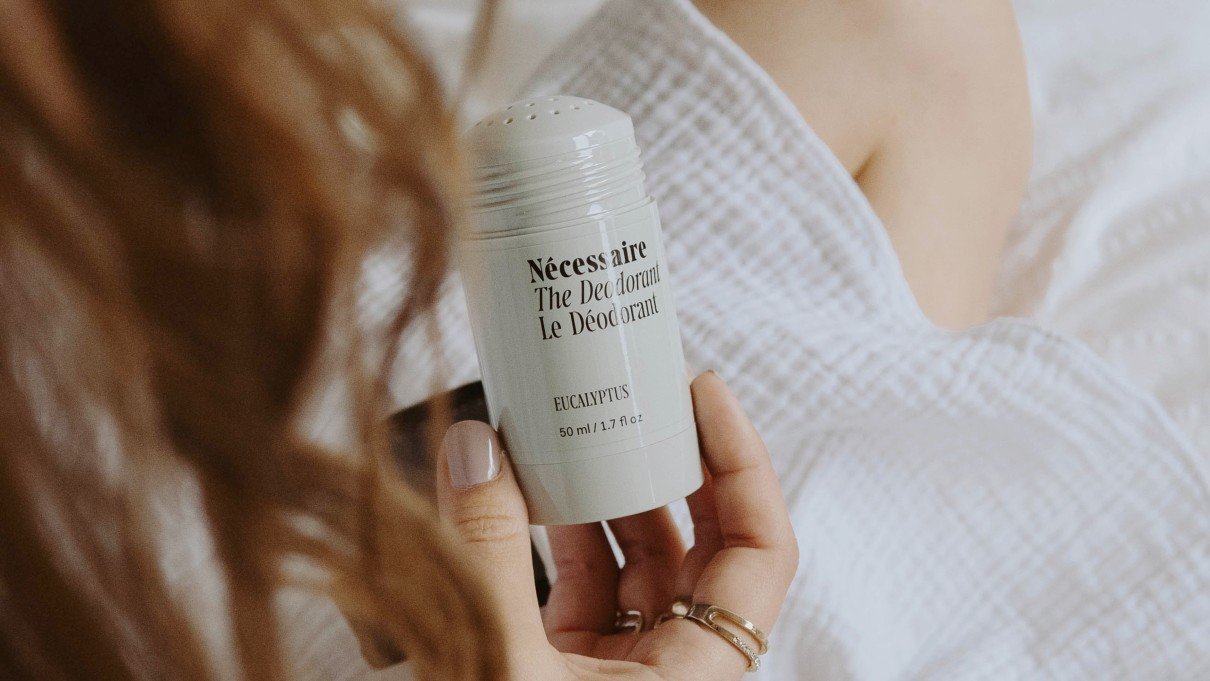Baking Soda vs Magnesium Natural Deodorant: Which Is Better?

A lot of deodorants are known to be bad for the environment – contributing hefty amounts of air pollution. Eco-friendly alternatives are all around us, whether you buy from a green company or want to make your own.
Of the eco-friendly deodorants on offer, baking soda and magnesium are two popular variants that act essentially the same.
Magnesium counteracts odorous bacteria on the surface of the skin while baking soda is known to be effective at absorbing moisture and killing odorous bacteria.
Is baking soda or magnesium deodorant better?
Baking soda has been used in deodorants for decades. If you’ve ever seen sodium bicarbonate included in your deodorant ingredients, that’s the baking soda.
While modern brands of non-natural deodorant have largely moved on to use other salts, baking soda is still considered for natural brands like The Natural Deodorant Co.
The science behind baking soda deodorants lies in balancing the pH of the skin, using alkaline baking soda to counteract acidity in our underarms to create a more neutral pH level. Baking soda neutralizes acidic sweat molecules which would otherwise cause body odor.
This is also how baking soda is used to clean and neutralize odor in the fridge.
As a bonus, baking soda has antibacterial properties that kill bacteria that would otherwise grow and release odors.
However, the alkaline nature of baking soda is also why it doesn’t work for everybody.
While some people are allergic to baking soda, the majority of people who come up with a rash after using baking soda is because of how alkaline it is. Getting the right amount of alkalinity from baking soda is important.
That’s where magnesium deodorants come in.
Magnesium hydroxide is used in many natural deodorants and is also used as a substitute for aluminum. While aluminum is absorbed in the skin, magnesium remains on the surface of the skin and counteracts bacteria that cause odor.
Magnesium is gentler than baking soda, making it a great alternative if you have very acidic sweat.
Baking soda-free deodorants often use magnesium hydroxide, magnesium oxide, magnesium sulfate, or magnesium citrate. Magnesium oxide is also known as Milk of Magnesia and is used both as a laxative and a deodorant.
Ultimately, baking soda and magnesium deodorants are equally effective, but because our bodies change often you could use baking soda deodorant fine one day and not the next.
Low concentrations of baking soda in deodorant are best to avoid too much irritation, but it just doesn’t work for some people.
If you’ve tried a baking soda deodorant or have had a rash from baking soda before, magnesium-based deodorants are likely best for you!
How to make baking soda deodorant
You can make baking soda deodorant yourself by mixing ⅛ of a teaspoon of baking soda with some water and rubbing it under your arms.
Baking soda can also be mixed with corn starch to fight odor and prevent moisture, using one part baking soda to six parts cornstarch.
Simple Green Smoothies’ homemade deodorant uses baking soda, arrowroot powder, organic coconut oil, and essential oils. You might be able to substitute arrowroot powder for cornstarch!
Make sure you only use essential oils that are really eco-friendly and aren’t contributing to environmental harm.
If you don’t want to make it yourself, there are a lot of companies that sell baking soda-based deodorant.
Magnesium deodorant is more difficult to make at home, but Mommypotamus’ homemade solid deodorant for sensitive skin uses magnesium chloride powder, beeswax, shea butter, cocoa butter, kaolin clay, and essential oils.
